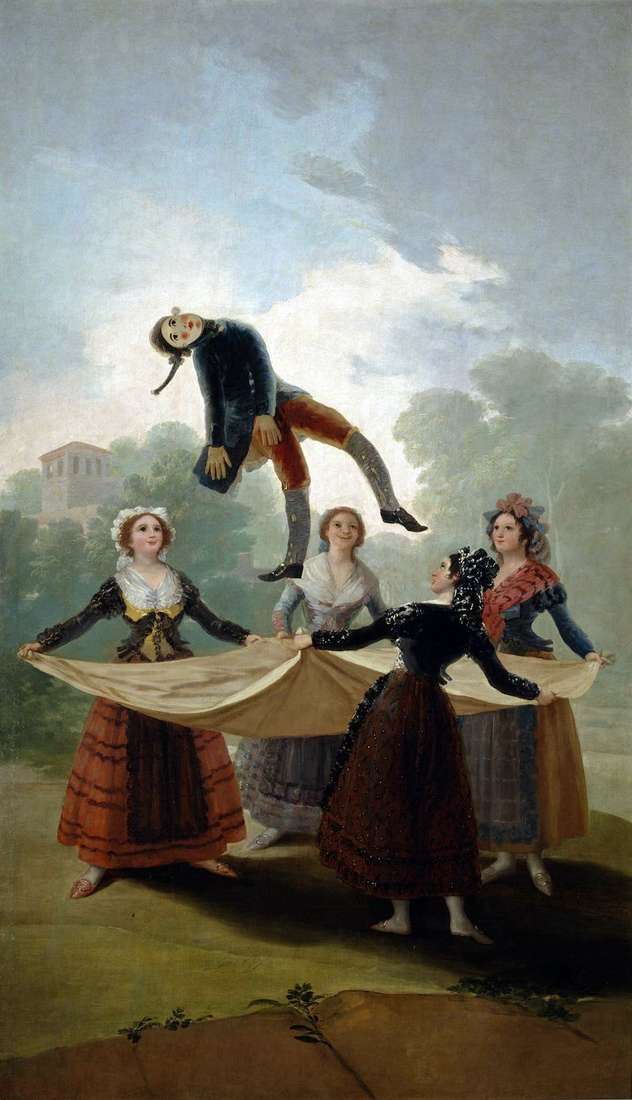
This is one of Goya’s latest and most famous cardboard, created by him for the Royal Tapestry Manufactory of Santa Barbara. The cartons helped the artist gain recognition, but Goya himself did not like this work, considering himself capable of more.
When trellises, created on cardboard, adorned the royal castles, the very original drawings for many years were forgotten. Most of these cardboards were accidentally discovered in the basement in the 1860s.
After the restoration, they were donated to the Prado Museum. Distinguished by freshness and liveliness, “Straw Doll”, when carefully examined, turns into a completely metaphysical work. The images of people playing with the doll symbolize the fragility of youth, for the doll itself tells that these full powers of the girl will grow old in time and turn into exactly the same puppets. In addition, there is something exciting and alarming in the faces of young women. Here we are dealing with a typical Goya “distortion”.
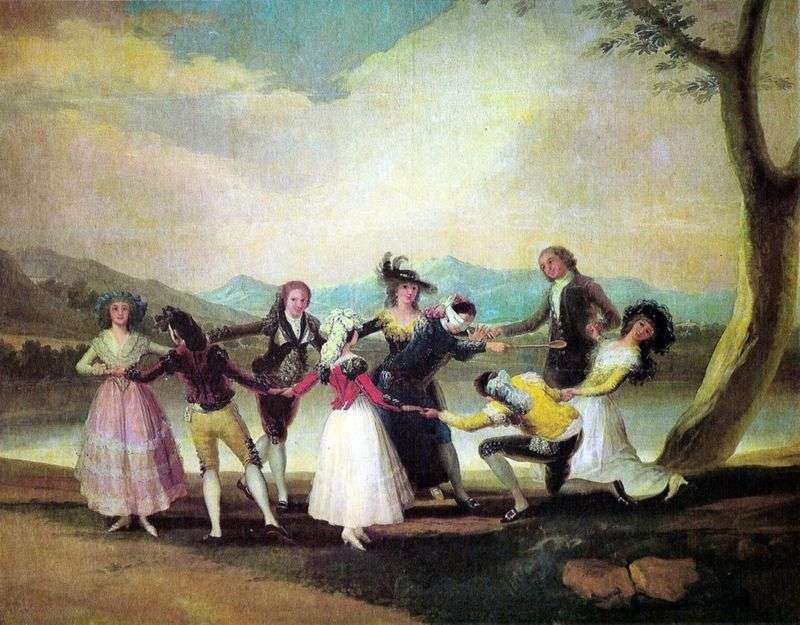 The game of blind man’s buffets by Francisco de Goya
The game of blind man’s buffets by Francisco de Goya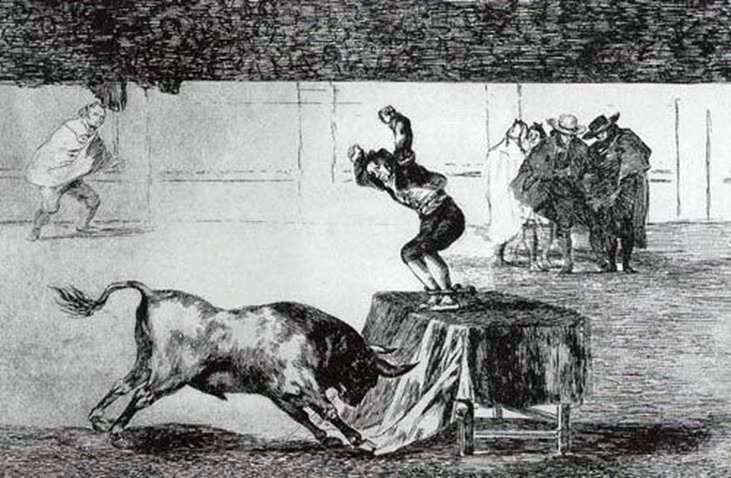 Tavromachia by Francisco de Goya
Tavromachia by Francisco de Goya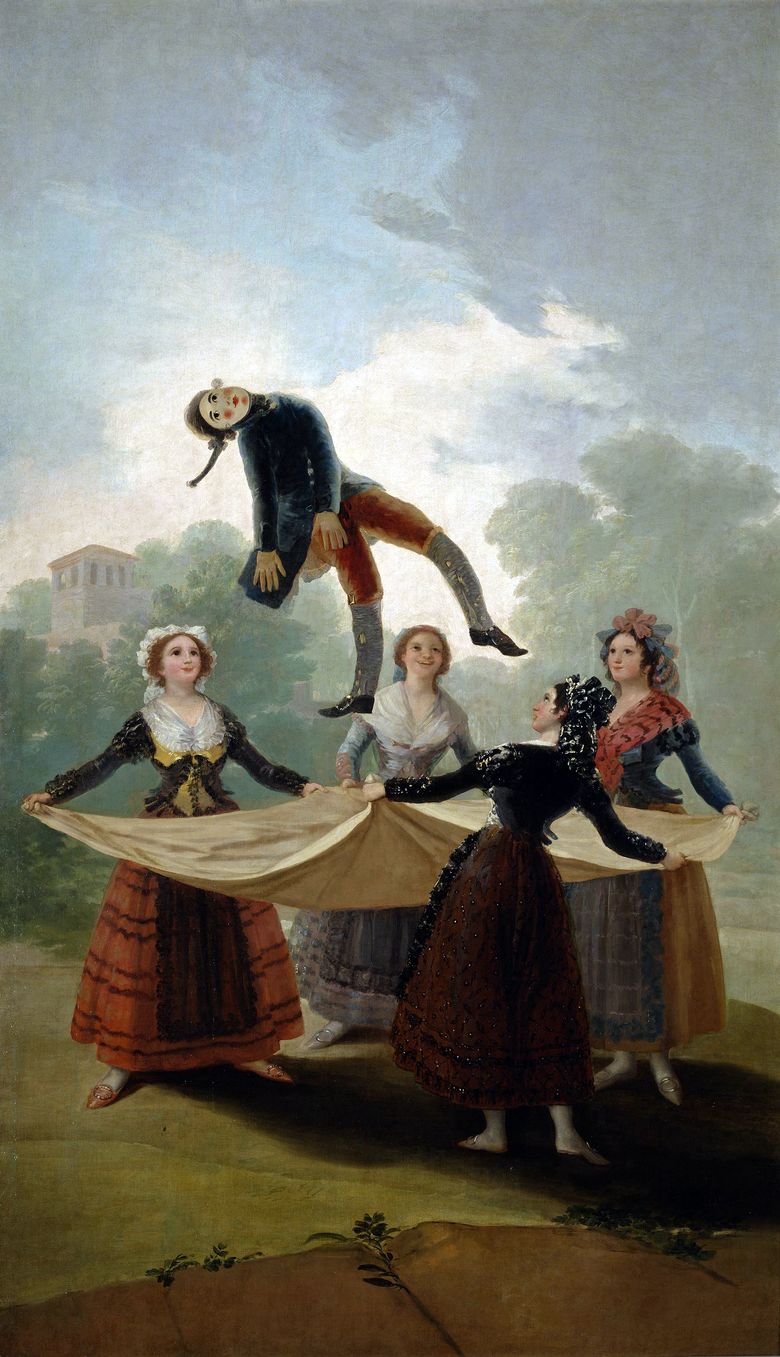 Poupée de paille – Francisco de Goya
Poupée de paille – Francisco de Goya Colossus by Francisco de Goya
Colossus by Francisco de Goya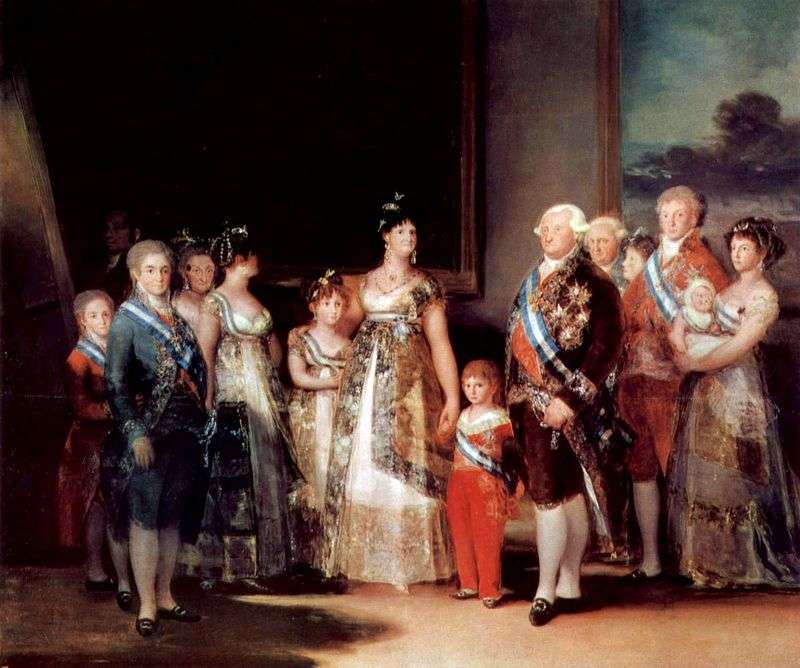 Portrait of the Family of Charles IV by Francisco de Goya
Portrait of the Family of Charles IV by Francisco de Goya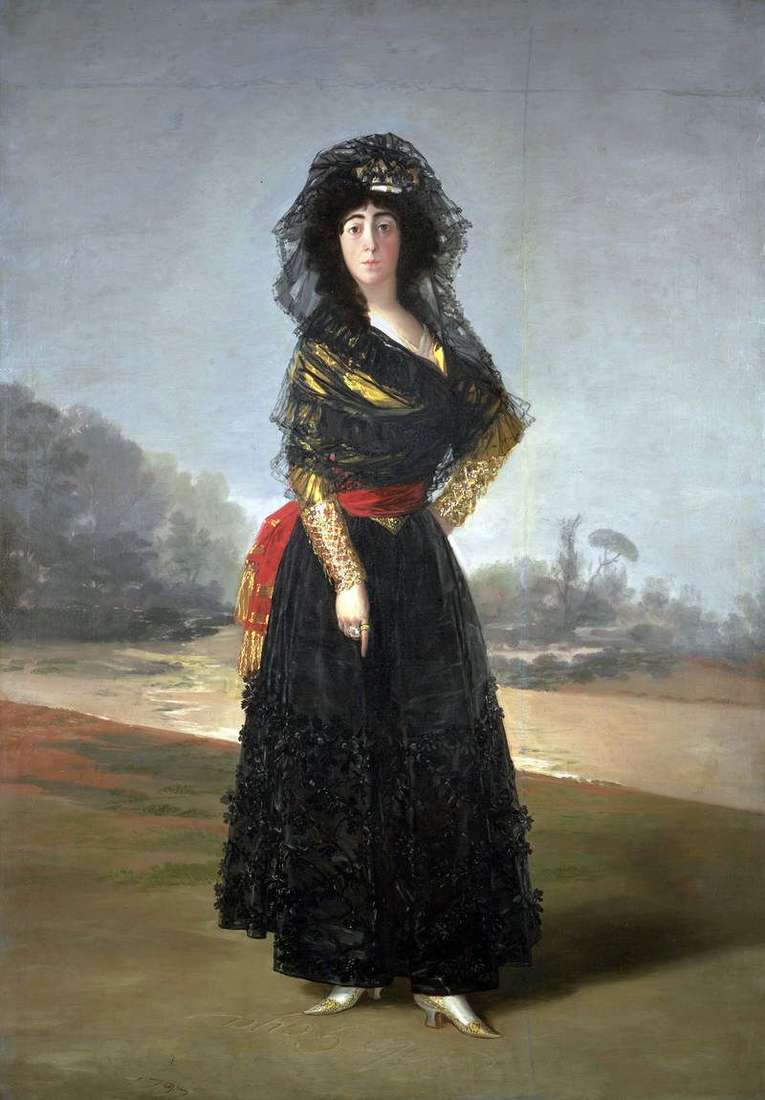 Duchess Alba in black by Francisco de Goya
Duchess Alba in black by Francisco de Goya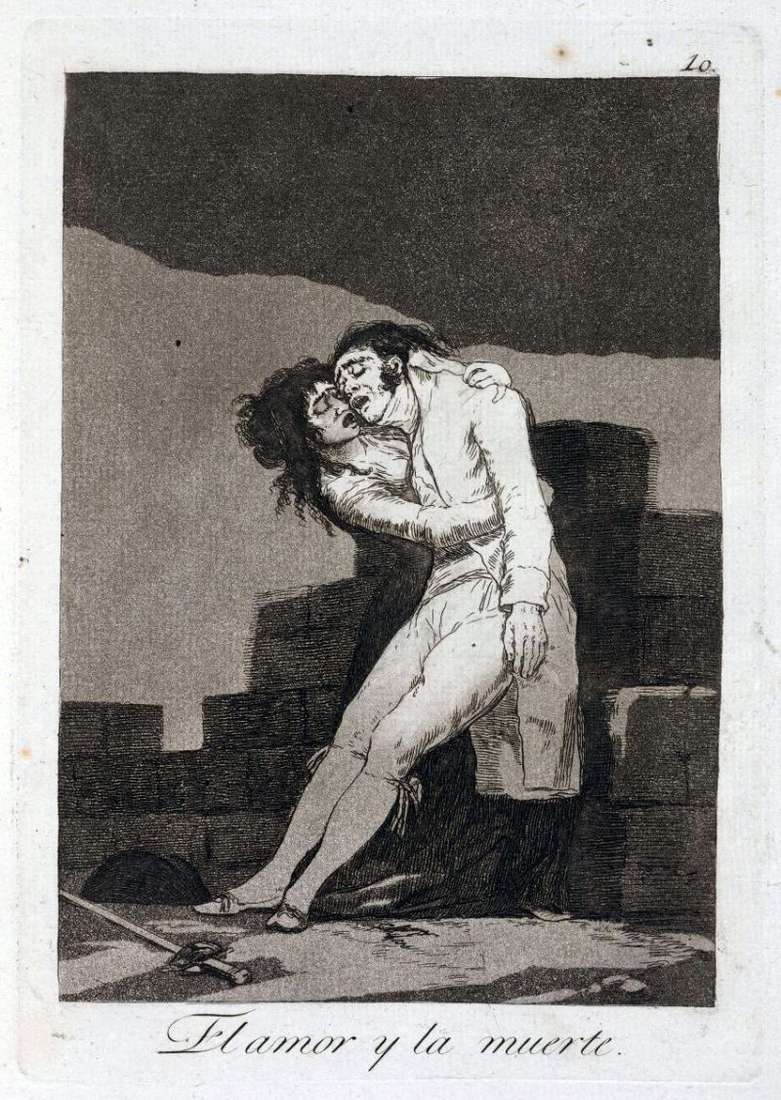 Love and Death by Francisco de Goya
Love and Death by Francisco de Goya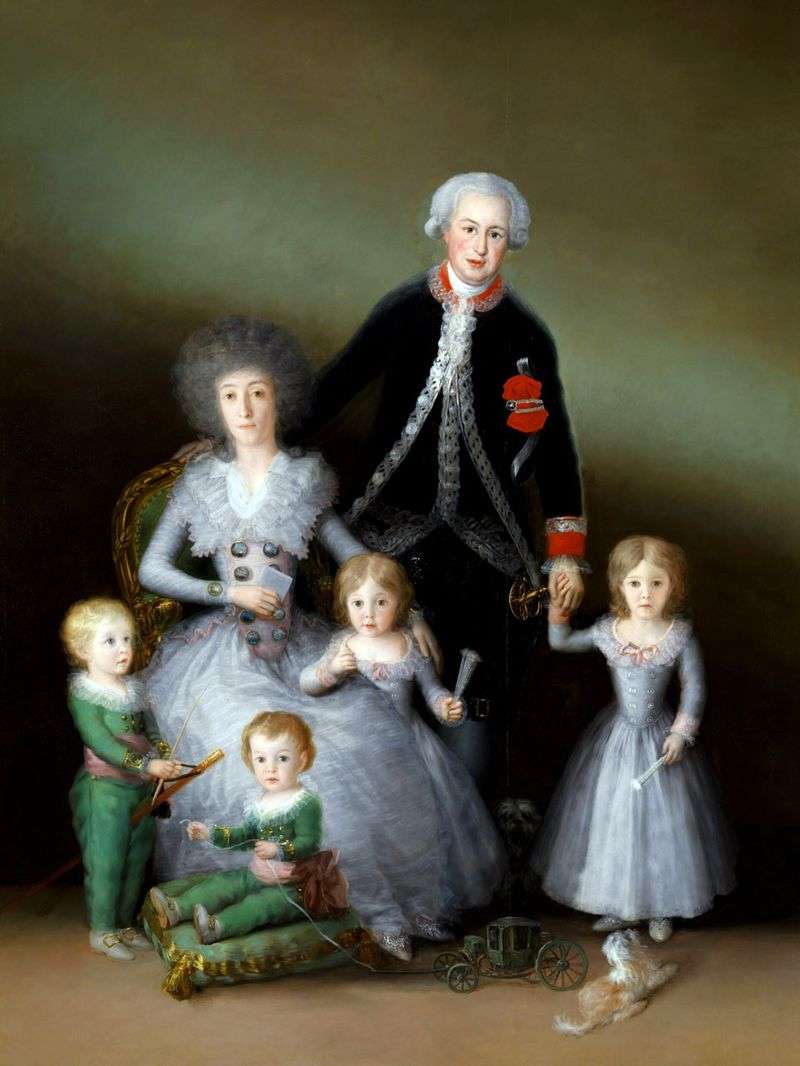 Family of the Dukes of Osuna by José Francisco de Goya
Family of the Dukes of Osuna by José Francisco de Goya